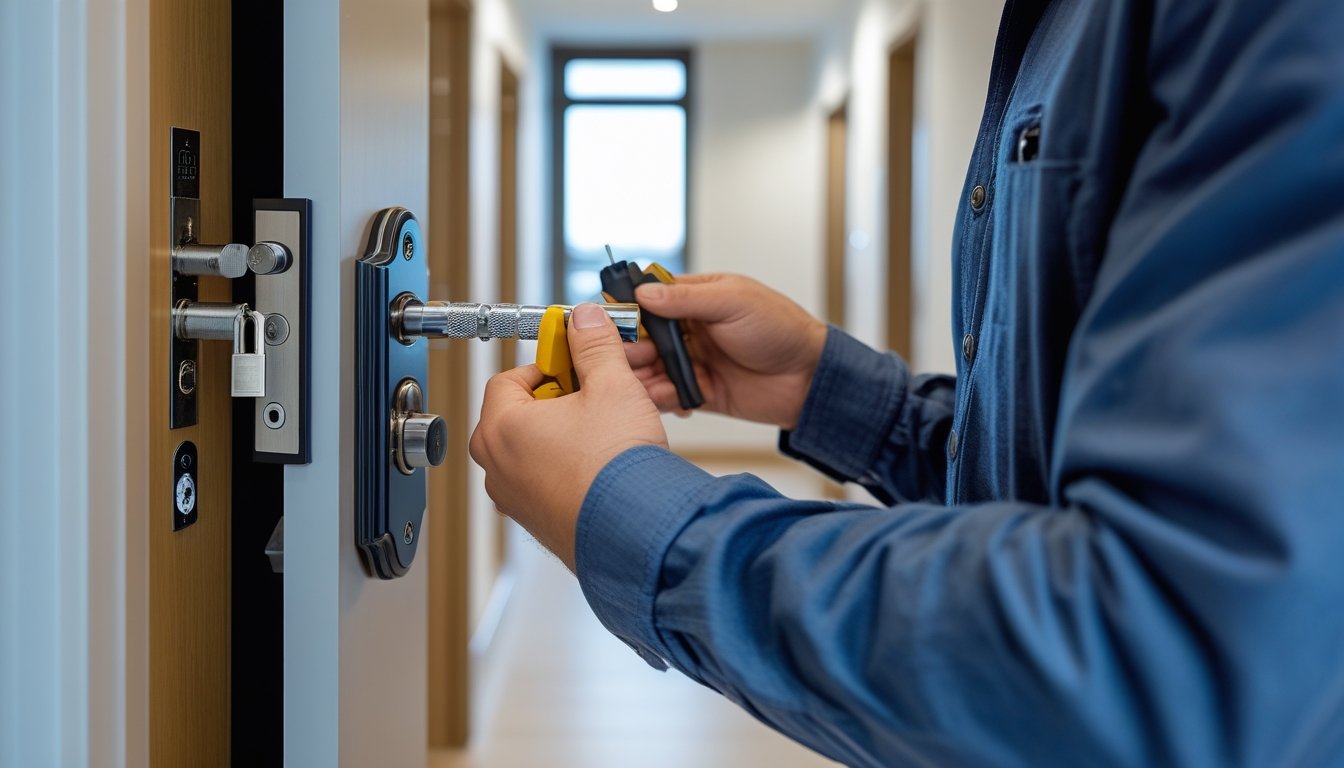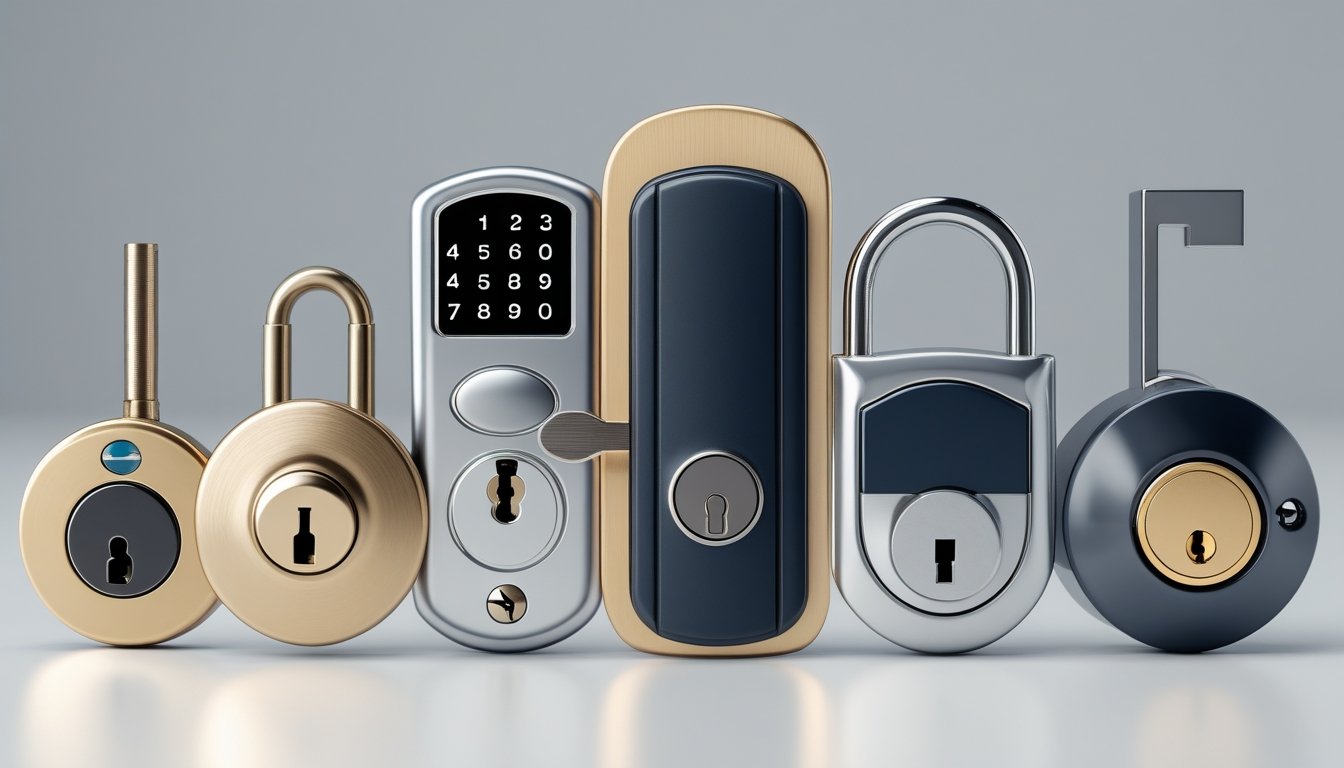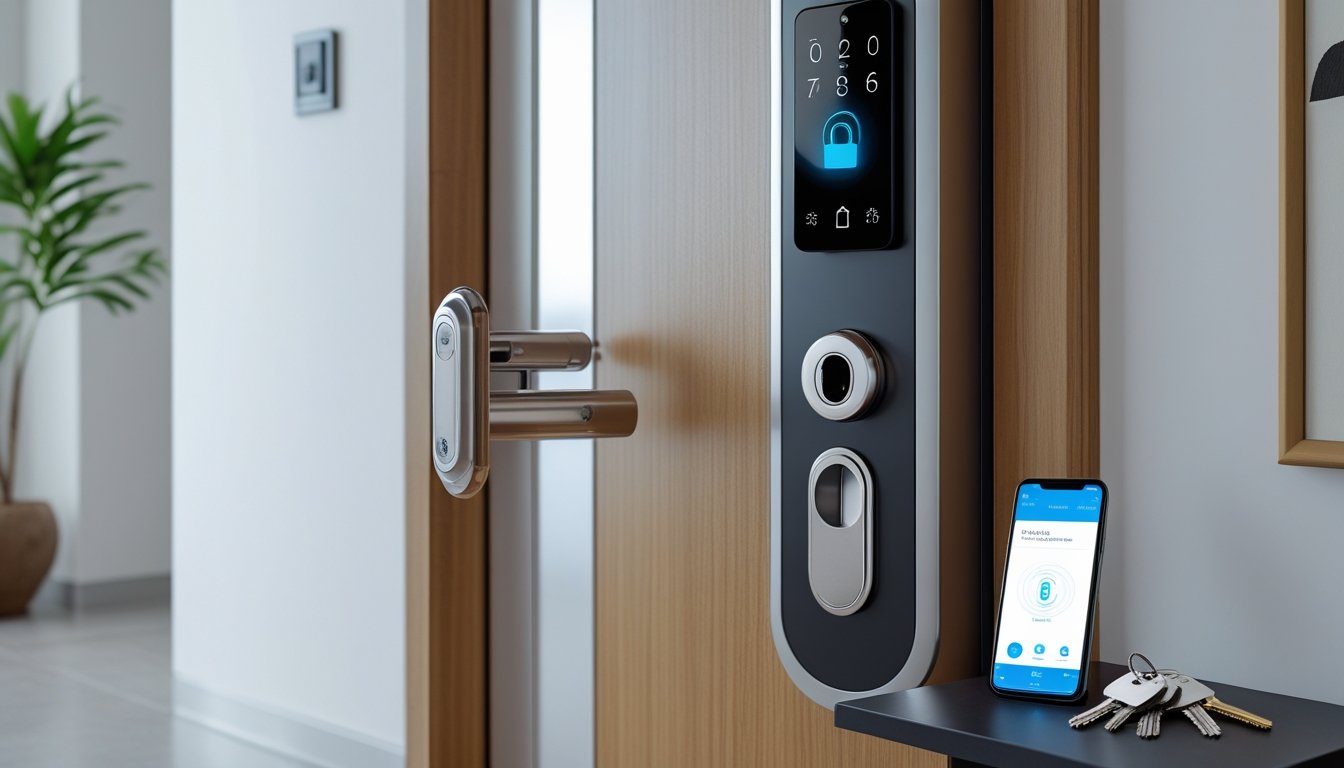Late updated: 17 Jun 2025 10:06
Written by: Elena Prescott
Choosing the Right Locks for Home Security in Flats: Essential Tips for Enhanced Safety
Securing our homes is a priority, especially for those of us living in flats where multiple residents share the building. The choice of locks plays a crucial role in establishing effective security without compromising convenience. For the best security, a combination of traditional deadbolts and modern smart locks offers the most comprehensive protection. While the classic deadbolt provides robust physical security, smart locks bring added layers through remote access and monitoring features.

Living in a flat presents unique challenges because of shared entryways and varying security policies imposed by landlords. It’s essential that we select locks compatible with existing fixtures, which also offer an easy-to-use interface. A portable lock can be a cost-effective solution for those on a budget, ensuring extra peace of mind without permanent alterations to the door.
As technology evolves, our homes should benefit from these advancements to stay secure. Smart locks not only provide high security but also add an element of modern sophistication and control that traditional locks can’t match. We can now control access remotely and get notified of any unusual activity, keeping our homes secure even when away.
Key Takeaways
- Combining deadbolts with smart locks provides robust security.
- Compatibility and ease of use are crucial for flat dwellers.
- Smart locks offer advanced features for modern home security.
Essential Lock Types for Flat Security

Choosing the right locks for our flats is crucial for ensuring safety. We need to understand the unique advantages of deadbolts, night latches, and mortise locks. These locks provide varying levels of protection and convenience, tailored to suit different security needs. Additionally, understanding padlocks and door lock grades helps in making informed decisions about securing our homes.
Deadbolts and Their Advantages
Deadbolts are a staple for flat security, known for their robustness. They consist of a solid metal bolt that projects into the door frame, providing a strong barrier against forced entry. Single cylinder deadbolts, which require a key outside and a thumb turn inside, are commonly used in flats. Meanwhile, double cylinder deadbolts require keys on both sides, offering an added layer of protection. We should carefully consider our unique security needs when selecting between single and double cylinder deadbolts. Proper installation is essential to maximise their efficacy, and hiring a professional can ensure this.
Night Latch and Mortise Lock Security
Night latches and mortise locks offer unique benefits. Night latches are mounted on the door's surface and automatically lock when the door is closed, providing quick security. They can be paired with deadbolts for enhanced protection. The mortise lock, on the other hand, is built into the door itself, offering robustness and versatility. These locks feature a complex mechanism that fits within the door, making them difficult to tamper with. For flats, the combination of a mortise lock with a night latch provides a balance of convenience and security. Choosing between these options depends on the specific layout and needs of our home.
Padlocks and Their Applications
Padlocks are versatile and can be used in various applications. They aren't permanently attached to a door, making them ideal for securing storage units, sheds, or even temporarily securing entrances in shared buildings. Combination padlocks offer keyless convenience, while keyed padlocks often provide greater security. The selection of a padlock should take into account the material and design, as bulkier and sturdier designs deter tampering. Consider the shackles, the U-shaped bars, as hardened shackles are more resistant to cuts and force. For flat dwellers, using a good-quality padlock for additional security in communal areas can be a wise decision.
Door Lock Grades Explained
Understanding door lock grades helps us choose the appropriate lock type for our flats. Locks are graded based on their strength, durability, and security level, typically ranging from Grade 1 to Grade 3. Grade 1 locks offer the highest security, ideal for entry doors where maximum protection is required. Grade 2 locks provide substantial residential security, while Grade 3 locks are sufficient for areas that require basic protection. When selecting a lock, we should consider if the expense of a higher-grade lock is justified by the security needs of our particular situation. Awareness of these grades allows for informed decisions, ensuring our flats are safe and secure.
Integrating Smart Locks and Advanced Security Features
Integrating smart locks with advanced security features ensures robust protection for our homes. Smart locks now offer enhanced connectivity and integration capabilities, boosting both security and convenience. By exploring keyless entry, smart home integration, and other features, we gain insights into creating an optimally secure flat environment.
Keyless Entry and PIN Code Access
Smart locks have eliminated the need for traditional keys. Keyless entry systems utilise either a PIN code or a number pad, allowing residents to bypass keys completely. This feature is particularly valuable in shared living spaces like flats, where managing physical keys can be impractical. Furthermore, incorporating fingerprint recognition provides an additional layer of security. Many systems offer the convenience of auto-lock and auto-unlock features. These ensure that our flats remain secure without manual intervention. Residents can enter easily while preventing unauthorised access.
Connectivity: Wi-Fi, Bluetooth, and Remote Control
Connectivity options have expanded, with Wi-Fi and Bluetooth capabilities transforming smart locks into remote-controlled devices. Wi-Fi connectivity allows real-time monitoring and management through mobile apps. Bluetooth provides a direct connection, enabling the door to unlock automatically as we approach. Remote control is particularly useful in flats where we may need to grant temporary access to visitors without sharing permanent codes. These connectivity features also aid in maintaining control over security settings, providing alerts on suspicious activity or unauthorised access attempts.
Smart Home Integration: Alexa, Google Assistant, Apple Home, and Matter
The integration of smart locks into broader smart home ecosystems enhances their functionality significantly. With compatibility for platforms like Alexa, Google Assistant, Apple Home, and Matter, these locks can be controlled via voice commands. It integrates seamlessly with other smart devices in our flat, streamlining how security is managed and monitored. Voice activation provides a hands-free option, reducing the need to manually interact with locks. This integration ensures that we can interact with the lock from virtually anywhere, further securing our smart living spaces.
Additional Features: Battery Life, Mechanical Key Backup, and Maintenance
The practicality of smart locks is also determined by additional features like battery life and backup options. Battery life is a critical consideration; long-lasting batteries mean less frequent replacements and maintenance. Moreover, high-quality smart locks often include a mechanical key backup for emergencies, ensuring access in case of power or connectivity issues. Regular maintenance, including periodic checks and updates, ensures our lock's functionality remains optimal. By considering these aspects, we ensure our smart locks deliver security and convenience, aligning with the demanding requirements of modern flat living.
Frequently Asked Questions

Choosing the right locks for home security in flats involves understanding various aspects of door and window security, legalities, and technology options. Let’s delve into some common queries.
What is the most effective door security measure for a flat?
The most effective measure often includes a deadbolt lock complemented by a mortise lock. Both offer robust security and are usually strong enough to prevent forced entry. Using multiple locking points further enhances security by making it harder to breach the door.
How can I enhance the security of my flat's windows?
Installing window locks is a crucial step. Options include pin locks, keyed locks, and sliding window locks. Reinforcing glass with security film can prevent easy access through breakage. Sheriffs’ bolts are also effective for additional security in sash windows.
Is it permissible to install additional locks on my flat's door?
While adding locks can enhance security, it’s essential to check tenancy agreements and seek permission from landlords. Most landlords allow, or even encourage, improvements that enhance security, but it's always wise to confirm beforehand to avoid lease violations.
What steps should be taken if a flat lacks a deadbolt lock?
Installing a deadbolt lock is an essential step if your flat lacks one. Consult with the landlord for approval, then hire a professional locksmith for installation. Deadbolts offer a significant advantage in deterring break-ins compared to spring latch locks.
Do landlords commonly change locks between different tenants in flats?
Although it's not legally mandated, many landlords choose to change locks for new tenants to ensure security. If this hasn't been done, it's advisable to request this as a condition of tenancy to ensure a safe and secure living environment.
Are smart locks a reliable option for flat security?
Smart locks can be a reliable and convenient option. They allow keyless entry and can be integrated with security systems for remote monitoring. Keep in mind the importance of selecting devices with strong encryption to protect against cybersecurity threats.
